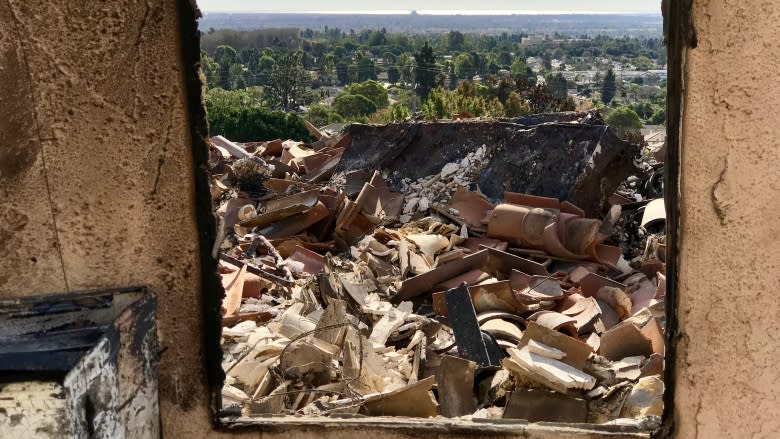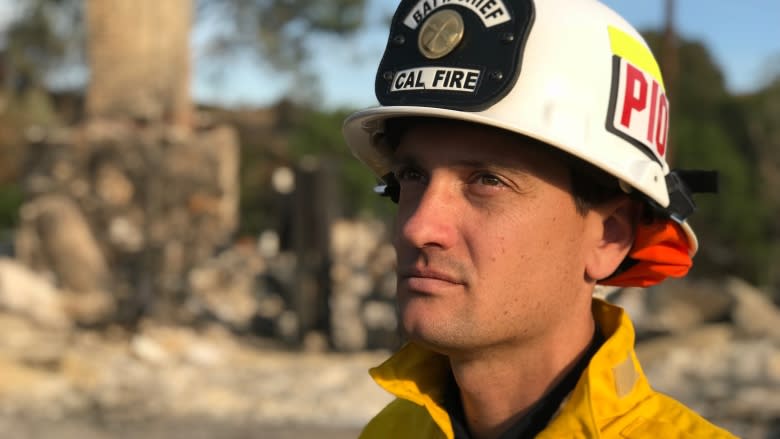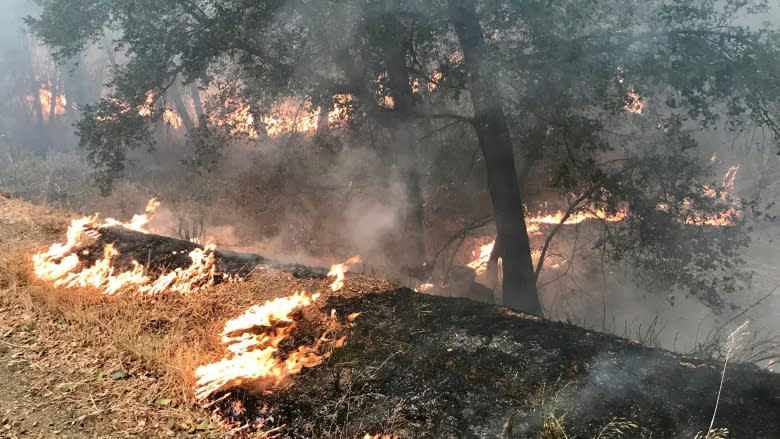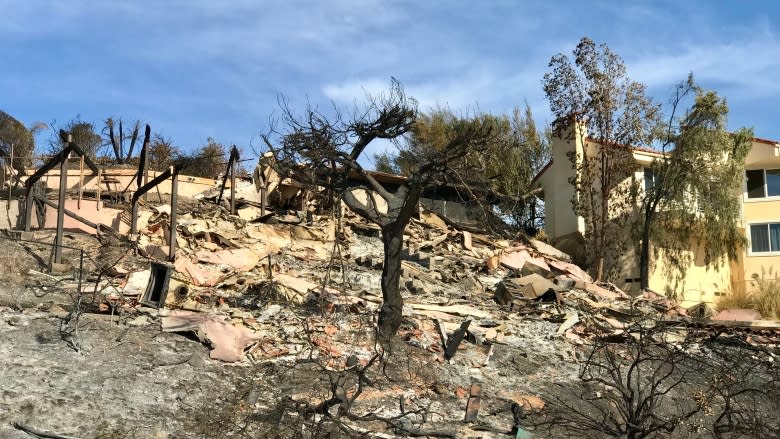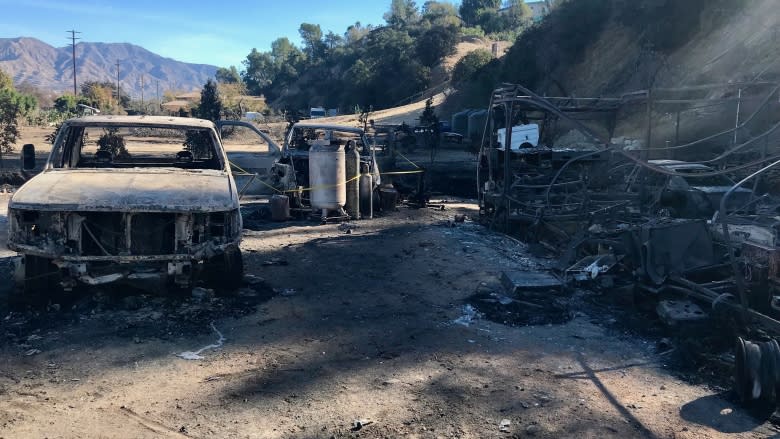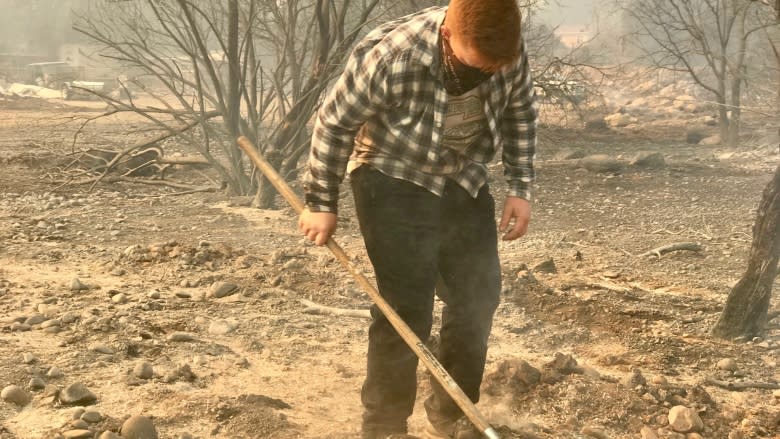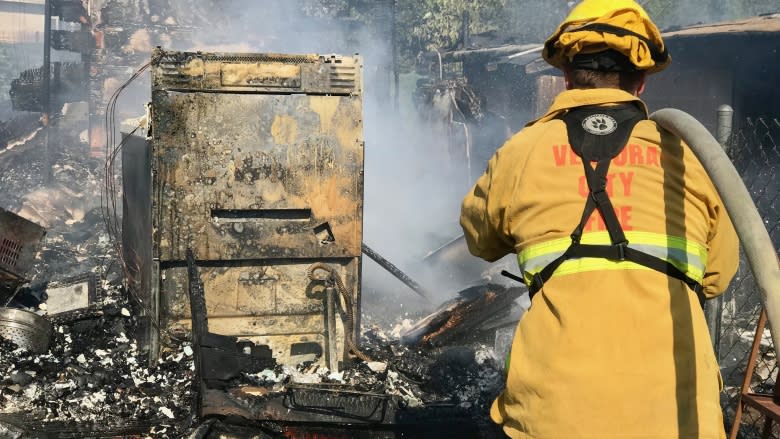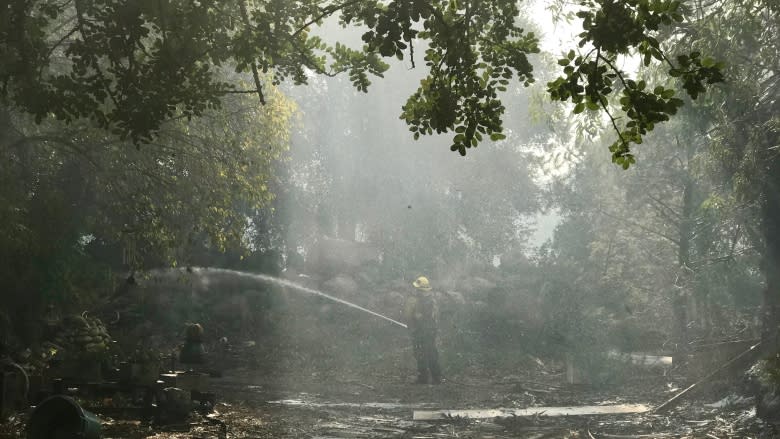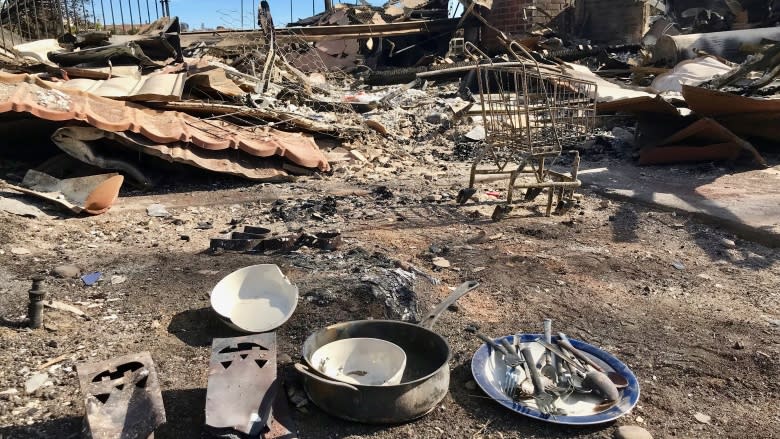Houses built too close to bush spread huge California fires on 'front line of climate change'
Even for those who've spent days in the presence of this massive fire, tramping through ash and soot and carpets of nails from burned-down houses, the sight of Colina Vista Street in the city of Ventura is something different.
The destruction is almost complete. House after house after house after house is, in the language of firefighters, on the ground.
Walking slowly down Colina Vista, Jonathan Cox, a fire captain with Cal Fire, says, "The first sinking feeling you always get is, not again."
He spent his summer with the crews fighting the massive, deadly Tubbs Fire in California's wine country. Now this. The Thomas Fire burned through here days ago, but houses are still collapsing, still burning.
"A lot of people think that once the fire goes through, the fire's done," Cox says. "But there are certain areas of heat that stick around for weeks if not months."
These Italian-style villas in the hills now more closely resemble Roman ruins. Metal wheels have melted into puddles. Plastic garbage cans have bubbled into unrecognizable Dali-esque objets d'art. In one long stretch, little is left standing except a row of chimneys.
Cox, a veteran of 14 years, can't believe what he's seeing.
"If you would have told me five years ago that in December you're going to be on a fire where you see 1,000 homes destroyed right before Christmas, I would have said you're crazy."
California's fire season is 70 days longer than it was just 15 years ago. This year, unusually high winds and dry air were part of the problem. But it has taken more than just bad luck to create the size and severity of the megafires like the Tubbs in Northern California and the Thomas in Southern California.
"This is the front line of climate change right here," Cox says. "This is where the heat and the extremes are meeting the realities of humans."
When Cox was a relative rookie 10 years ago in the Sacramento area, fires in the U.S. burned on average half as long, consumed half as much area, cost the federal government one-third of what it does now to fight, and burned one-third fewer homes.
A decade later, the 2017 fire season has become the most destructive on record, burning more than 5,500 square kilometres. Some estimates predict the total cost of the fires will reach $180 billion US. So far, the Thomas Fire has burned almost 1,000 structures and is responsible for two deaths, including that of a firefighter on Thursday.
The biggest factor behind much of the rise in the devastation caused by these fires: all the houses were built near wild, fire-prone areas.
According to the International Code Council's Report on Wildland-Urban Interface, since 1990, 60 per cent of new construction in the U.S. has occurred close to wilderness.
"You move people into those areas and you get wind events and extreme, extreme change in climates, and you have this inevitable intersection of disaster," Cox says. "And what we fear is that these large and damaging fires are kind of the new normal in this state."
"The new normal" echoes a phrase used by California Governor Jerry Brown recently as he toured wildfire-singed Ventura.
What Cox is seeing in this blackened neighbourhood of Ondulando is typical of many of the hardest-hit areas: homes built much too close to the bush. Firefighters advocate a 30-metre buffer between houses and any large swaths of flammable vegetation, but in many cases here the buffer is only a couple of metres at most.
"And then there's also the different types of vegetation," Cox says. "The native fire-resistant vegetation obviously tends to fare better than the ornamental vegetation that's out there."
The problem is, experts say fire-resistant species are slowly disappearing because of the unusual frequency of the fires, replaced with exotic species that burn much more readily.
Cox says the only way to limit such fire damage is to change where, and especially how, people build.
The important factors are "what the buildings are made out of, what the street width looks like, what the vegetation around it looks like, and more importantly in the bigger scale, what kind of fuel management we can do around a community so that when a fire does start it doesn't have a continuous fuel bed."

